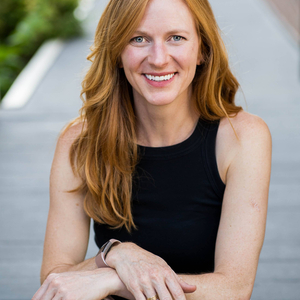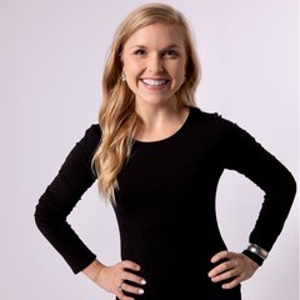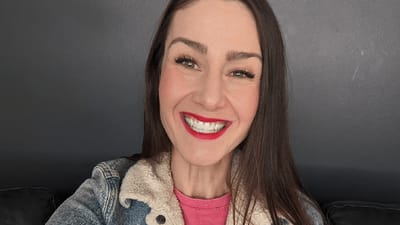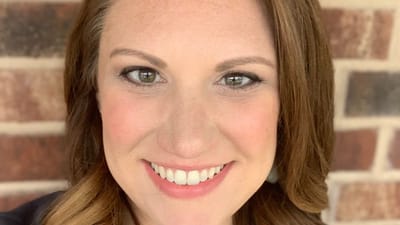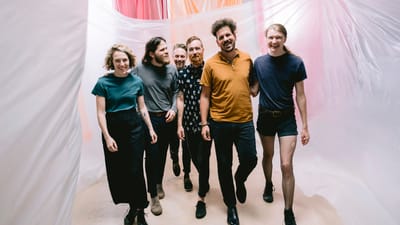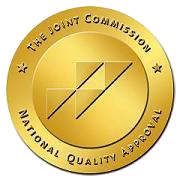What is Virtual Treatment Really Like?
Mental Note is available on Apple Podcasts, Spotify, Stitcher, or wherever you get your podcasts. Search for Mental Note, and subscribe so you never miss an episode!
Learn more about Eating Recovery At Home and Pathlight At Home.
At the beginning of 2020 Mackenzie Carmichael flew to Eating Recovery Center in Denver, Colorado determined to finally overcome a persistent eating disorder. The plan was to slowly step down from residential treatment to an outpatient program where she would commute to therapy and meals several times a week as her healing progressed.
However, the growing pandemic soon placed extra restrictions on that traditional outpatient model. So, her treatment team pivoted and instead recommended attending ERC & Pathlight’s Virtual Intensive Out Patient Program (VIOP).
On today’s episode, we’ll explore Mackenzie’s experience doing treatment from her family’s home and discover how VIOP impacted her recovery. We’ll also speak with Kayla Peak-Rishel, Director of Eating Recovery Center’s virtual treatment program to better understand what goes into the patient experience.
Transcript
Ellie Pike:
Let's be frank. It's spring of 2022, and we've all reached peak fatigue with virtual spaces supplanting physical ones. From Zoom meetings to Netflix binges, to birthday celebrations over FaceTime, all of these hours in front of a screen can feel like a blur. So what would you think, if your treatment team recommended moving to a virtual intensive outpatient program? Also, known as vIOP.
Mackenzie Carmichael:
Will I be able to connect with the other patients in the group? Will I be able to connect with a whole new care team? People that I have not yet met, people from all over the country. And will I receive the same level of care and attention that I received in person?
Ellie Pike:
Meet Mackenzie Carmichael.
Mackenzie Carmichael:
Hello everyone. My name is Mackenzie Carmichael, and I am so excited to join today's podcast to talk about my experience with mental health, body image, food, and going through virtual treatment for an eating disorder.
Ellie Pike:
She's an alum of Eating Recovery Center and Pathlight's vIOP program. And we wanted to talk with her about her experience. Was it the right fit for her recovery journey or merely a substitute for face-to-face treatment? We'll also chat with the director of the program to hear what exactly vIOP entails. So if you're interested in seeking virtual treatment for yourself, or if you're supporting a loved one in their treatment plan, you should finish today's episode with a solid understanding of what to expect from this relatively new treatment option. You're listening to Mental Note podcast, I'm Ellie Pike. Well, thank you so much for joining today, and I'm excited to share your story with our listeners and especially dive into what virtual treatment looked like for you and what your experience was like. But first, let's start with a little bit about your upbringing and your own story of mental health.
Mackenzie Carmichael:
Absolutely. Well, I grew up in such a loving food and body positive home with two incredible parents. I have two older sisters who are five and seven years older than me. So I was truly the baby of the family. And we moved just a little bit all over, Texas, Georgia, Chicago, and Chicago is where I ended up being raised for the majority of my life. But honestly, all of my memories, most of my memories are all super happy and wonderful memories of us being together as a family. However, when I was 11 years old, our family dynamic wasn't just how I described it. We were honestly all suffering. My sisters, just two years apart from one another, they were physically, verbally and emotionally abusive to each other and that just broke my parents' heart. So I made a silent pledge with myself to be the perfect daughter. And I did that so my parents had one less daughter to worry about.
Mackenzie Carmichael:
That was around age 11, and that's also the start of puberty. And I didn't really know what was going on with my body. And I continuously searched for new and different areas of my life that I could improve with the intention of continuing to strengthen my perfect daughter status and pledge. So some of these areas included keeping my room super clean and orderly, excelling in school, being the best dancer at my dance studio, never missing a Catholic mass, making my own breakfast and lunch to take off that responsibility for my parents and using exercise as a way to cope with my stress and anxiety. With these improvements, I became extremely antisocial, extremely depressed, lonely, sad. I completely and helplessly lost myself to anorexia and orthorexia nervosa. And then I started to see, "Oh, wait, this is kind of fun. This is interesting because I can control this."
Mackenzie Carmichael:
I'm a kid and usually I am not making all of my decisions for me. But this is something I can choose. And, "Oh wait, I kind of like this weird way it makes me feel." And it's almost this weird satisfaction and I couldn't see that it was unhealthy as long as it made me feel a little bit okay, a little bit of comfort. I was just going to continue doing it.
Ellie Pike:
With all of the chaos at home, Mackenzie's newfound attachment to her eating disorder flew under the radar, until finally her family doctor sounded the alarm.
Mackenzie Carmichael:
I went for my annual physical as a 12 year old. And the doctor actually told me and my mom, right in front of us, "She needs to go to an inpatient treatment center." And I remember my mom started crying and said, looked at me and I was shaking my head, "No, I don't want to go. And I didn't think I had a problem." And she goes, "We can't do that. I don't want to break another daughter's heart." And that really broke my heart. So we agreed to do outpatient therapy.
Ellie Pike:
And so, Mackenzie began a long journey of halfway committing to therapy. Through high school, college, and her early career, she had several brushes with treatment. But they never took because she simply didn't want them to.
Mackenzie Carmichael:
There was a part of me that kind of thought, "Well, I don't think, for me, it's possible to ever lose this eating disorder." I thought and this happened my whole time with this eating disorder. I thought I was the exception. I'm the one person that recovery would never work with. I am a stubborn person. I am headstrong. I'm a perfectionist. And if I have a goal, I'm going to stick to it. And right now, my goal is to please my eating disorder. Even if I'm going off to a treatment center, my goal is not to recover because I am very loyal to this eating disorder.
Ellie Pike:
So I know you ended up in treatment again. How did that happen? How did your mindset shift?
Mackenzie Carmichael:
That's a great question. Well, I think a lot of it had to do with maturity. I was a little bit older and I knew all of these experts in the field and I really trusted them. I found a outpatient team that I really admired and respected and I think that was key. When I got to a really low place that's when they both, they spoke up, they didn't even let me ask, "Do you think I should go to recovery?" They told me, they said, "We can't work with you anymore unless you get better. And it would be unethical for us to continue working with you, unless you went to an inpatient treatment center like ERC." And ERC was definitely the one that they recommended to me because it was closest to where I was living. And also most of them that I was working with had worked previously at ERC. And then I had my friend who currently works at ERC to talk with her. She knew me. I really trusted her advice. And I asked her, "What do you think? Do you think this is going to help me?"
Mackenzie Carmichael:
And I was assuming she was going to say, "Mackenzie, I know you're stronger than that. I know you can do this without treatment. And it works for some people, but I don't think this would work for you. I think you should just keep on doing what you're doing." Well, nope. She said, "Mackenzie, yes, you absolutely need to go." And so that was the last straw where I just let go.
Mackenzie Carmichael:
The week before the world shut down, due to the pandemic, I flew out to Denver for the residential treatment program at ERC. And I had no timeline. I had a one way ticket. I didn't know when I was going to come back because I was going to heal. I was going to fully recover and I was not going to come back until I was fully healed. Because I told the world that I was leaving and I am such a proud person that I was going to make sure I come back healthier than ever. And once I got to a really good, strong place, I was able to transfer to the Dallas location of ERC. I was able to live at my home, but go to the program in person, during the day. And then at nights, that's when I would come back and be able to stay at my place. And then once I was even at a stronger place mentally and physically, I stepped down to vIOP, which is the virtual intensive outpatient program.
Ellie Pike:
By embracing treatment and diligently striving to create a healthy foundation, Mackenzie had finally started to see success. But before we dive into her vIOP experience, let's take a step back and ask, what is virtual treatment and how does it work?
Kaila Peak-Rishel:
My name is Kaila Peak-Rishel. I'm clinical director of vIOP, virtual services. And my pronouns are she/hers.
Ellie Pike:
Kaila, through ERC and Pathlight, what kind of virtual services do you all provide?
Kaila Peak-Rishel:
So we offer five lines of services, both child, adolescent, and adults for eating disorders. We have a binge eating line of service as well. And then we have mood and anxiety services for both child, adolescent and adults. And those are all in 21 states right now.
Ellie Pike:
Kaila, what are some of the benefits of virtual treatment?
Kaila Peak-Rishel:
So I think one of the biggest benefits of virtual treatment is it's just more accessible. We even have a patient now who lives in a van and kind of travels. And so I think what a great representation of how accessible this service is. I think another benefit is you get to do it in the comfort of your own home. And so you really get to practice the things that you're being taught and implement them at home. We find that attendance is actually better in a virtual setting than if you had to go to a brick and mortar. Another benefit I think is we encourage our patients to work with their outpatient team throughout the entire process. And so I think it's a really nice way to transition home, if you've been in higher level of care or get more stability with the support of your outpatient team that you already know and trust.
Kaila Peak-Rishel:
And then lastly, I find the virtual space way more diverse, both in our staff and in our patients. And so I think we just get a really well rounded perspective in terms of recovery from our patients and staff, because they're all over the nation, which is really cool.
Ellie Pike:
Would you say that there are any added benefits to doing virtual versus doing it in person, on site, in a center?
Kaila Peak-Rishel:
I think the first benefit would be, you get to live your life still, right? So you still get to keep job. You still get to go to school, you still get to have your family support. We have a lot of full-time moms that just are running around constantly and can still fit in this vIOP programming. So I think that is the biggest takeaway of the virtual support is just being able to do life and get grounded in these skills and in these groups.
Ellie Pike:
And what is the format of virtual treatment and specifically virtual intensive outpatient treatment?
Kaila Peak-Rishel:
So for virtual intensive outpatient treatment, it's three days a week for three hours of group programming. So that's skills group for eating disorder patients, that's having a meal with their team. And then in addition to that, we have two sessions, one with the dietician and one with the therapist for Pathlight Mood & Anxiety, they have one session with their therapist.
Ellie Pike:
And so to paint the picture, if I was doing virtual therapy from my home, I would be on screen with how many other folks and then a therapist or dietician?
Kaila Peak-Rishel:
So we call the milieu of patients a pod. So in one pod you have up to eight other patients with you and then a team member. So either the dietician, a program therapist, or a therapist. In skills group, that's coming directly from a program therapist, a dietician or a therapist. And so you really get to kind of collaborate with those seven to eight other patients in the group.
Ellie Pike:
Thanks. And what do we know about its treatment efficacy? Essentially, do we know if virtual treatment really works?
Kaila Peak-Rishel:
So I think even before the pandemic, I think there was only one tiny little study out there that measured, "Is virtual just as effective as in person?" And it was promising data, even though it was, I think, only measuring. It was 16 patients, but now that we've gone through the pandemic, everything kind of went virtual. We have preliminary data that I actually just saw a few weeks ago, that shows that it's just as effective outcomes as an in-person IOP. For example, if there's a kiddo going through FBT, the effectiveness of virtual is just the same as if they were in a in person IOP.
Ellie Pike:
That's great. It's wonderful to know that you're measuring outcomes and that you're seeing that folks are finding this so beneficial. And I've heard a lot from folks that who have done virtual that say that there's a lot of benefits just to doing it from home, right? They get to use their own kitchen or really talk through the triggers that they're experiencing at home, or it's easier to be vulnerable because they get to be in their own comfortable space. So thank you for providing these services. This is really incredible. For those folks who want to learn more about the virtual treatment that you offer, how can they learn more?
Kaila Peak-Rishel:
The best way to find out more information would be to go to our website, eatingrecovery.com or pathlightbh.com. And then I also run weekly, every Tuesday, a virtual Q&A for potential patients or caregivers to ask questions, learn more about the program and just get more of an overall sense of the programming itself.
Ellie Pike:
Thank you so much for that. I'll be sure to link to that in our show notes. So if anyone is interested in our programming and has questions, they can pop into a conversation with Kaila on a Tuesday. Convenient as vIOP may be, I wanted to know how that played out in Mackenzie's life. Was it effective? Did she have any apprehensions about going virtual?
Mackenzie Carmichael:
I definitely did have apprehensions about going through recovery from in person to virtual. And some of the apprehensions I had was, will I be able to connect with the other patients in the group? Will I be able to connect with a whole new care team? People that I have not yet met, people from all over the country. And will I receive the same level of care and attention that I received in person? So I always had the ability to chat or reach out to my therapists in person if I had a question. Or when we were doing meals or snacks, they would all come around and check to make sure we all had what we needed. And also not just for me, but for others. When you just see the head to your belly button, or even less than that. You can't see if people are fidgeting or you can't see if my foot is tapping, showing that I'm anxious or nervous.
Mackenzie Carmichael:
And so, will I still be able to work through that when not everybody can see that and pull that out? So those were some of the things that I was just concerned about. But the reason why I truly allowed myself to become immersed in vIOP and completely join it and let go of my control and my pride was because I promised myself that I would go through the full process. And I told my team, "I trust you." And I did. I really did trust them. And if their recommendation was for me to continue virtually, then that is what I'm going to do. And I'm not going to half-ass it.
Ellie Pike:
Throwing herself into vIOP ended up being a lot more enjoyable than Mackenzie had imagined. It provided just the right amount of structure for her recovery to transition into daily life.
Mackenzie Carmichael:
So the structure for vIOP was three days a week, it was all virtual, but each day was three hours in length. So we would be meeting with a group of, gosh, I think it was around seven people, maybe even smaller, where they were all a patient like I was as well. We were all logging in on a video web stream software system and looking at each other, like you would see your coworkers or whatnot, FaceTime esque. And we would all be going through a group session together that was led by a therapist. They would guide the discussion. It would be open discussion. It'd be very similar to what our programs were like within the buildings when we were in person. So depending on your relationship with food, something that you needed to actively work on, the days that we did have vIOP were typically the days they encouraged you to challenge yourself and work on those challenges because you're so supported by the community.
Mackenzie Carmichael:
So we would pause midway through our session, pause, maybe take a 10 minute break and get your meal. So for me, it was typically I would join for dinner and we'd come back. And what we would do is we would show the therapist, or if our dietician was leading that day, we would hold up our meal to the dietician and we would all be in break rooms. So only the dietician could see what you were eating, just so you couldn't compare and see what the other patients were having because everybody's meal plan is completely different. Bodies need a different amount of food, different type of food. So this was to ensure that there's no comparison. Loved that part of the treatment. And then once everybody got their meals checked, then we all began. And it was so fun.
Mackenzie Carmichael:
We all engaged in getting to know one another. It was as if we were sitting around a dinner table, just checking in on people's days. We allowed ourselves to be us. We allowed ourselves to be Mackenzie and Ellie and not patient and other patient that is out of state. We just laughed and we played games. And then at the end of our meal, we were able to all go around and just check in, see how we were feeling, how that meal was, how the challenge, if you were being challenged that day, how that was going and any emotions that were tied to it. And then from there, we had a little break where we could put away our dishes and then come back for a final little program where we would reflect on the day, we would also plan and create goals for the upcoming days.
Mackenzie Carmichael:
And also just end on a place where we all felt very much supported, our voices were heard. We would never end if somebody was mid-sentence. It was very supportive and loving and inclusive. And it was a great, great opportunity to just keep it going and to still feel very much connected to a group of individuals, a group of strangers. I felt like I really got to know them, especially because you could see people's backgrounds, people in their office, their bedroom, you could see their cat walking behind them. And I feel like that was just such a gift to be able to get a peak into somebody's life. And for me, it was such a comfort to be able to do treatment at home, where I had my family pictures on my desk, and I was in a place where I felt completely comfortable.
Mackenzie Carmichael:
And I just felt like it was such a good state of mind to be in when you're in a place that is what you created to be, and you're the happiest there. So that was such a treat as well. And just the fact that I didn't have to get in a car and drive to the center. I could log on two minutes before it started and that allowed me to keep my job to not have to worry about that. To be able to have more time talking to my parents and my grandmother, and really just be able to enhance my life through just the relationships I had created and not have to carve out time to travel to treatment. And that goes for now when I'm still doing outpatient virtual treatment, that is when I'm meeting with my dietician and my therapist. We're virtual, we're on Zoom or some other platform, and same thing, I'm working virtually.
Mackenzie Carmichael:
And I'll just put a block on my calendar for just an appointment that I have and that's when I switch from my work Zoom meeting. And I switch over to my personal meeting with my dietician, and it is so seamless. And it's fantastic because through virtual, through vIOP, that's really when they taught us skills on how to sustain recovery, how to make meals for ourselves, how to balance work. And for many people that were in my groups, many of them were parents, how to be able to care for your kids while you're still caring for yourself. And that was awesome that we could all practice and just have a trial run together.
Ellie Pike:
And I imagine some of the people in your virtual IOP program, home isn't always the most comfortable for all of us. And so I imagine that there's some piece there that's also helpful that when you go back to your own home, despite it being uncomfortable, you also have this really supportive group around you. Would you agree? Or did you notice that being the experience for anyone else?
Mackenzie Carmichael:
Absolutely. I do remember being in a session where a few people were having a hard time being distracted by being in their room and stuff. And so that was one thing where, "Okay, well, this is fantastic that we're learning about this now, this distraction." Because that's your home, that's where you're going to be spending a lot of time. For those people, they weren't planning on moving anytime soon. So let's focus on those distractions. Let's figure out ways that we can perhaps lessen those hindrances from your treatment and work on those challenges around you. I feel like it was the challenges that we face on a day to day basis were very front and center and top of mind, because we were going through our treatment process at home. And so we could immediately pick up on, "Oh yeah, this has been a challenge for me. Can we talk about it?"
Mackenzie Carmichael:
It just was an opportunity to talk through it and we problem solved together. It wasn't just the therapist taking on that role of let's talk it through and let's find a solution. People that I was in the treatment with in the group were sharing ideas that honestly ended up sticking with me and sticking with others. We were a team and everybody's situation is different. Everybody's home life is different too, but everybody was so eager to help one another. There was a different element of connection that we all had because it was virtual. And with that element, I kind of think that we almost were even closer because we did get the opportunity to truly just be welcomed into one another's home in such a unique situation.
Ellie Pike:
Thank you so much Mackenzie for highlighting what virtual looks like and just the beautiful impact that had on you by being so connected to others and being able to do it from the comfort of your own home. It is so inspiring to hear about your recovery. And as I hear your story, there's a few words that really stick out to me. And one is trust and your ability to dive in and trust your treatment team, trust the process. Trust their recommendations to go step by step through all of the levels of care. And then your choice to be vulnerable in the process is really admirable and takes so much courage. And then lastly, it sounds like you really had faith that this could be possible believing that there could be something more for yourself. And so those three words, trust, vulnerability and faith, I know are important to you as well. And I just want to say, thank you so much from the bottom of my heart for sharing this with others so that they know it's possible for them too.
Ellie Pike:
Trust, vulnerability and faith. Despite our collective burnout with screen time and virtual spaces, Mackenzie found virtual treatment to be the right choice for her recovery journey, but she didn't make that choice alone. She trusted her team of providers because they had the ability to see the big picture of recovery. They'd already proven to her that they had her best interest at heart. And so when they said vIOP was the right choice, she fully committed to being vulnerable to the process. If you'd like to know more about ERC and Pathlight's virtual intensive outpatient program, you can start by visiting either Eating Recovery Center or Pathlight Mood and Anxiety Center's website, and look under the treatment and services tab. There you'll find lots of information on the history, leadership and the day to day schedules of virtual treatment. Another way to learn more is by calling ERC and Pathlight's free assessment line, to speak with a therapist trained to help you find the best resources for your journey.
Ellie Pike:
That number is 877-850-7199. Mental Note podcast is brought to you by Eating Recovery Center and Pathlight Mood and Anxiety Center. If you're looking for a free support group, check out eating recovery.com/support-groups or pathlightbh.com/support-groups. Also, if you like our show, sign up for the eNewsletter and learn more about the people we interview at mentalnotepodcast.com. We'd also love it if you left us a review on iTunes, it helps others find our podcast. Mental Note is produced and hosted by me, Ellie Pike, and directed and edited by Sam Pike. Till next time.
